Fumone is a little gem in the Ciociaria region, built around the Longhi De Paolis Castle. The village overlooks Lake Canterno, in the shadow of the Ernici and Lepini mountains.
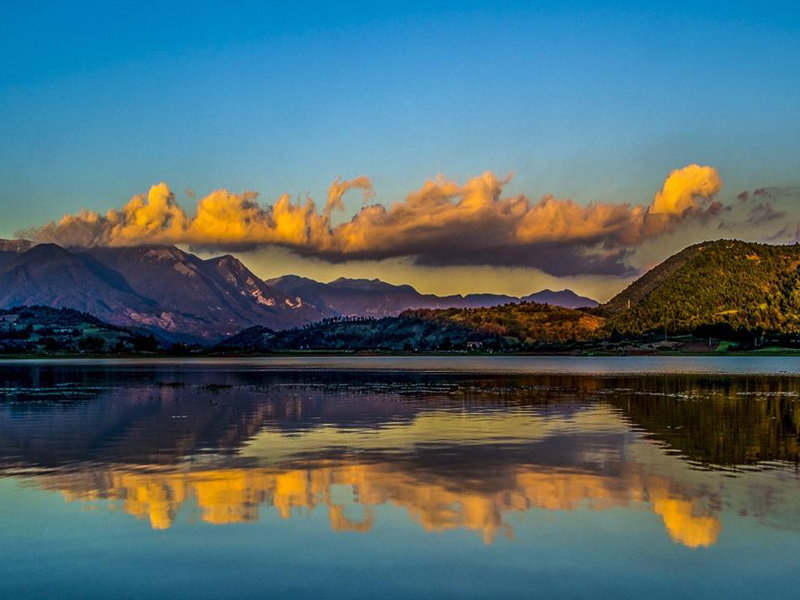
The Canterno Lake Reserve is a natural oasis in the shadow of the Ernici Mountains, featuring a karstic ‘ghost lake’. In 1800, a sinkhole in this marshy basin became blocked with debris. As a result, the water poured into the lower part, creating a new lake. After days, months or years, the debris dissolved and re-accumulated, and suddenly the lake disappeared or reappeared, just like a ghost!
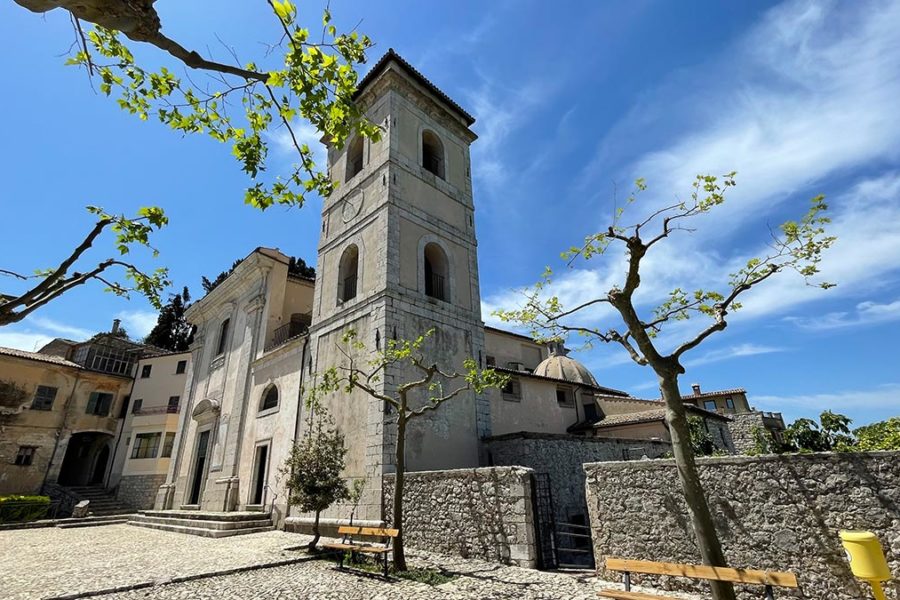
Collegiata di Santissima Maria Annunziata – ciociariaturismo.it
The village has the same atmosphere that medieval pilgrims would have experienced, with its arcades, stairways and charming alcoves. Don’t miss a visit to the Collegiate Church of Santissima Maria Annunziata, home to a fresco depicting the death of Pope Celestine V and a statue containing the relics of the patron saint, Saint Sebastian.
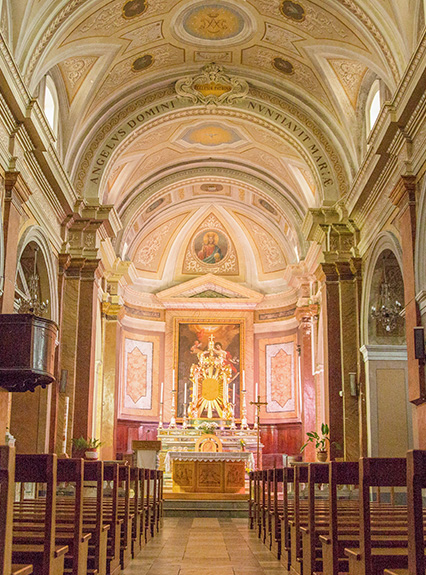
Collegiata di Santissima Maria Annunziata – visitfumone.it
The Collegiate Church of Santissima Maria Annunziata has stood in the historic centre of Fumone since 1100, and was restored at the end of the 1700s and in the 1800s. In the apse is the painting of the Annunciation, a work by Buttaragi from 1786. The collegiate church is linked to the historical events surrounding the imprisonment of Pope Celestine V in the castle, where he died in 1296. The nave houses a fresco depicting the death of Pope Celestine V.
All that remains of the original church is the wooden statue of the patron saint, Saint Sebastian, with his relics. During the double celebrations of the patron saint, on 20 January and the day after Pentecost, the statue is displayed in the gilded wooden processional carriage dating back to 1600. The festival dates back to 1886, in memory of the victorious resistance to the siege of Henry VI, son of Barbarossa. In honour of Saint Sebastian, doughnuts are baked and then thrown from the bell tower of the Collegiate Church.

Castri Fumonis Ludi
‘Castri Fumonis Ludi’ commemorates Henry VI’s attempted siege of the fortress of Fumone in 1186 AD. The event was conceived by Sergio Caponera, the Baron of Fumone. Over 150 costumed participants parade through the village at the end of August, including historical groups from other Italian regions and street artists, camps, ancient sword fighting demonstrations, archery, period music and flag throwers.

Castello Longhi De Paolis – photo Fbacebook @castellodifumoneofficial
The road to the Castrum climbs up Mount Fumone to below the walls, which are made up of hammer-tipped squared stones. The road was interrupted in ancient times by only one gate in the direction of Rome, Porta Romana. Porta Napoletana (or Portella), on the other hand, was an emergency exit in the stretch of wall south of the town and facing in the direction of Naples.

Fumone – comune.fumone.fr.it
The village is clustered around the Castle. At the same time a restful and heavenly place, it has stood out since the 9th century between the Ernici and Lepini mountains and has belonged to the Longhi De Paolis marquises since the end of the 16th century.
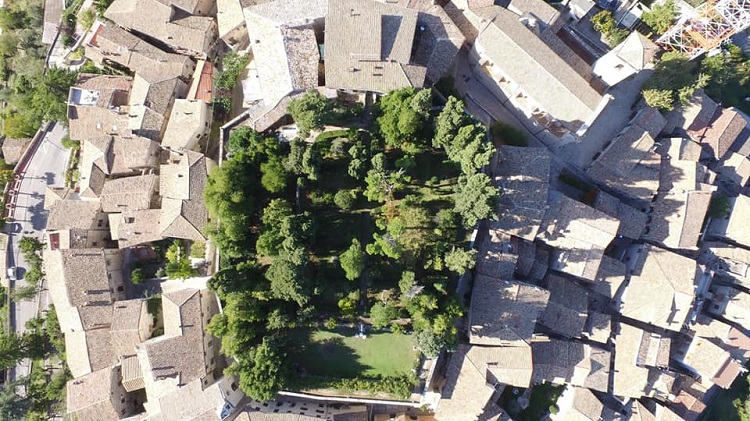
giardino pensile – Facebook @castellodifumoneofficial
Europe’s highest roof garden stands at 800 metres above sea level on 3,500 square metres of age-old trees! From this Italian-style garden, the panorama sweeps over Ciociaria all the way to Rome. From this unconquerable stronghold, in fact, a column of smoke used to leave during invasions and, from village to village, the same signal was repeated until it reached Rome. An impeccable system that even generated a saying:
When Fumone smokes the whole countryside trembles
Celestine V, Dante Alighieri‘s ‘ignorant’ pope who renounced the papal throne, was imprisoned and died in the fortress. During the guided tour you will see the prison and the Sanctuary of Celestine V, the small chapel built by the Longhi family in his honour.
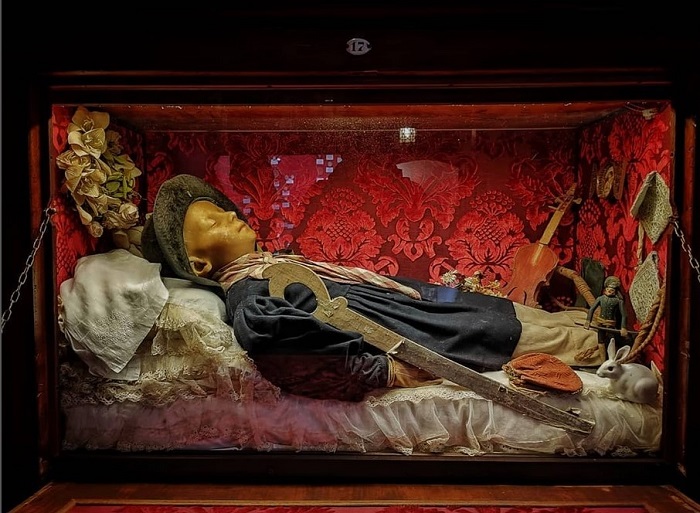
la teca con salma di Francesco Longhi – Instagram @castellodifumoneofficial
In the depths of Castello Longhi De Paolis, the disturbing embalmed body of Francesco Longhi Caetani lies in a display case. The nineteenth-century heir to the castle died at the age of just five for reasons that remain unclear. His mother, Marquise Emilia Caetani Longhi, did not want to let him go, so she dressed him in his finest clothes, surrounded him with his favourite toys and kept him embalmed in a display case.
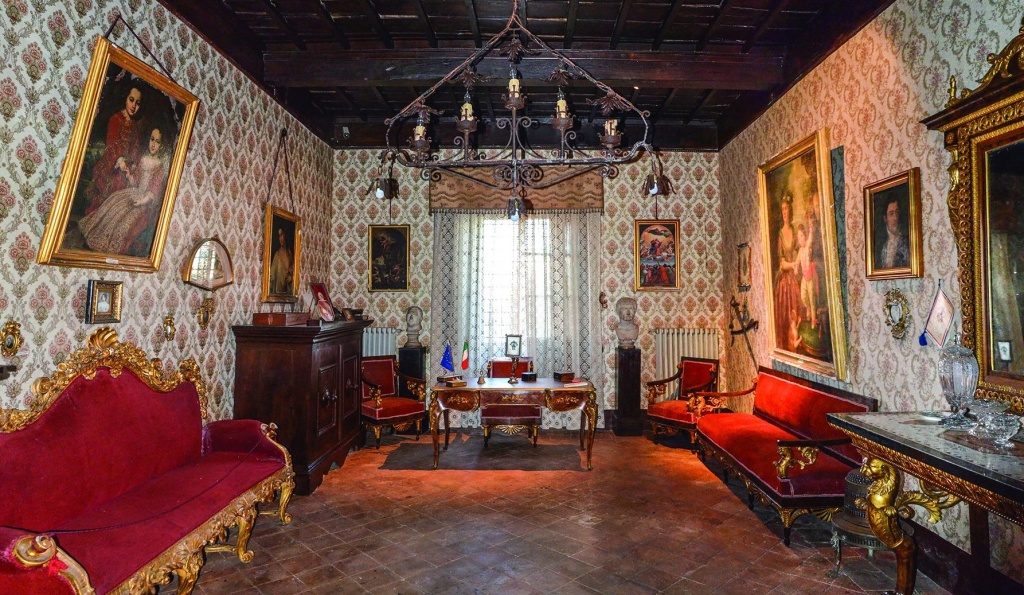
Casa Museo Ada e Giuseppe Marchetti Longhi, interno – retedimorestorichelazio.it
On the second floor of the castle, the Ada and Giuseppe Marchetti Longhi House Museum recounts the history and stories of the families and personalities who lived in the castle. This wing was used as the summer residence of Ada and Giuseppe Marchetti Longhi before they donated it to the Municipality of Fumone in the late 1980s.
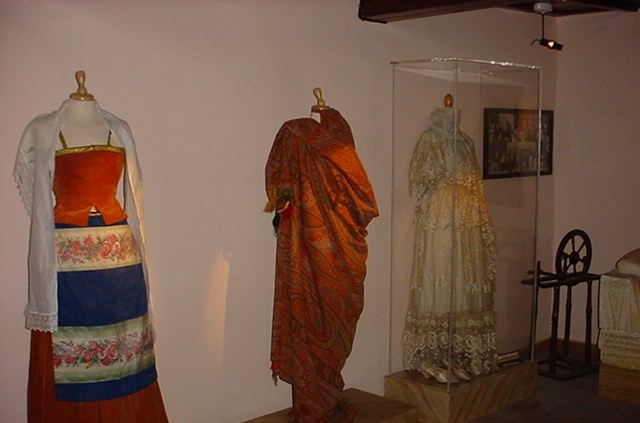
l’abito da sposa del 1830 nella Casa Museo – retedimorestorichelazio.it
The Salotto Turchino (Blue Room) houses some of the furnishings from Marchetti Longhi’s Roman home, such as the console table and Louis XI chairs. The main hall features portraits of the Longhi-Caetani family and an effigy of Carlo Alberto before he became king, placed on the ceramic stove. Admire the collection of 19th-century lead soldiers and the wedding dress of Emilia Caetani from 1830.
Fumone Castle is a Historic Residence in Lazio that is accessible to everyone. A multisensory experiential trail has been created in the Hanging Gardens: an olfactory trail for people with intellectual and visual disabilities, multisensory visual-tactile information panels for people with intellectual disabilities, a QR code information system with audio for the blind, in Italian and English, and a video in Italian Sign Language for the deaf. Information leaflets in Braille are also available.
Traditional Ciociara cuisine has peasant origins. Among the typical recipes, in honour of Saint Sebastian, there is ‘panata’, a soup made with razor clams in anchovy broth and a piece of bread, and ‘sagne’, egg-free fettuccine made only with water and flour and seasoned with the same sauce as panata.
